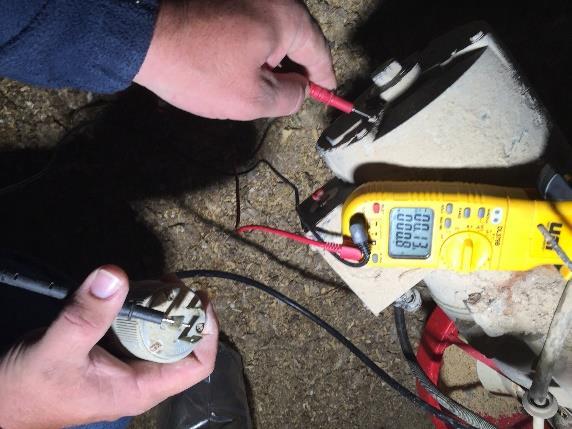Showing 201-210 of 361 publications
Updated: August 10, 2022
Food Safety in Your School Gardens, Classrooms, and Greenhouses (FS-1077)
As interest in educating students about gardening and food production increases, it will be helpful to outline food safety principles in school settings. This fact sheet uses a pre-existing University of Maryland Extension fact sheet and expands it to include more information on rain barrels, lead in soil, chickens, and school policies. It also includes a glossary of terms. Authors: Justine Beaulieu, Heather Buritsch, Shauna Henley, and Jon Traunfeld; Title: Food Safety in Your School Gardens, Classrooms, and Greenhouses (FS-1077)
Updated: April 8, 2021
Grow it, Eat It, Freeze It, The Basics of Freezing Foods at Home
Food preservation creates a sustainable supply of food throughout the year. When consumers purchase food to preserve, it means less food waste for the farmer. Freezing is a simple, quick and convenient method to preserve food. This publication shares the basics of freezing food at home.
Updated: August 5, 2021
Packing Methods for Freezing Foods, A Guide to Packing Foods before Freezing
There are several ways to pack fruits, vegetables, and meats for freezing. Packing helps to retain the flavor of the foods and minimizes textural changes in foods during freezing. This fact sheet shares tips on freezing fruits, vegetables, meat, poultry, and fish.
Updated: April 7, 2022
Poultry Farm Electrical Safety
Poultry farmers work with many different types of electrical equipment daily. Harsh environments inside and outside the poultry house can affect the safety of electrical equipment and create hazards. Growers need to take steps to prevent electrical injury, including only using properly grounded equipment, keeping electrical panel free of dust and debris, and looking for problems with equipment and cords. This publication provides guidelines for poultry farmers to follow to avoid electrical hazards.

Updated: February 7, 2021
Your Land, Your Legacy, Planning for Every Maryland Landowner
Making decisions about the future of your land may seem overwhelming. It can be difficult to initiate conversations with your family, to sort out the different professionals involved in estate planning, and to know how to take the first step. Try not to get overwhelmed—the hardest step is often the first one. This publication can help get you started, and discusses the types of professionals who will help make it happen.
Updated: January 26, 2021
Proper Stewardship by Growers is Essential to Ensuring Dicamba Tolerant Soybeans Continue to be Available
Dicamba tolerant soybeans, marketed under the trade name Roundup Ready 2 Xtend Soybeans are again available to Maryland growers for the 2018 growing season. This line of soybeans combines previous Roundup Ready technology with tolerance to the herbicide dicamba. While this new dicamba tolerance may be useful in combatting certain tough-to-control weeds including marestail and palmer amaranth, use caution when applying dicamba. Applications of dicamba may cause problems due to the sensitivity of certain crops to the herbicide. Exposure can occur due to drift, volatility, or a non-target application. This report provides recommendations for using new dicamba-tolerant technologies.
Updated: January 29, 2021
Selling Shell Eggs to Retailers, Wholesalers, and Food Service Facilities in Maryland
There is a strong consumer demand for locally produced foods including a call for more locally produced eggs. Real profit potential exists for Maryland egg producers to expand their markets in to retail, wholesale and Food Service Facilities in Maryland. This publication provides introductory information and resources that can help Maryland’s egg producers improve their sales of shell eggs into retail channels. Because there are continual changes and updates at both the state and federal levels, please check for the most current edition of any regulations cited in this publication.
Updated: January 22, 2021
Methods for the Detection of Vibrio Species
Vibrio bacteria naturally inhabit coastal waters and are frequently isolated from a variety of raw seafood, particularly oysters. Detection of Vibrio species in seafood and growing water has traditionally been problematic because of the limitations of conventional techniques based on plate culture methods. Moreover, no culture method is able to discriminate pathogenic populations. In order to provide education and training to individuals involved in seafood testing, a hands-on training course has been developed and offered through cooperative efforts of University of Maryland Extension (UME) and University of Maryland’s Joint Institute of Food Safety and Applied Nutrition (JIFSAN). The methods described in this manual are designed for detection and enumeration V. parahaemolyticus, V. vulnificus, and V. cholerae in oysters. The analytical methods are combination of procedures from the Food and Drug Administration (FDA) Bacteriological Analytical Manual (BAM) and other sources, and have been used as training protocols for the hands-on training course on Vibrio Detection.
Updated: January 6, 2021
Broiler Production Management for Potential and Existing Growers
Broiler production is the largest agricultural revenue generator in Maryland. A broiler is a chicken produced specifically for meat production. Broiler production includes small fryer- to large roaster-type chickens. Approximately 35 percent of cash farm income in Maryland was from broilers in 2016. Maryland ranked eighth nationally in the number of meat chickens produced, and tenth in the number of pounds of meat chickens.
Updated: January 13, 2021
Model Recall Plan
This is the recall plan for Farm. This plan does not address recall provisions related to meat or egg products. This plan will be periodically updated.